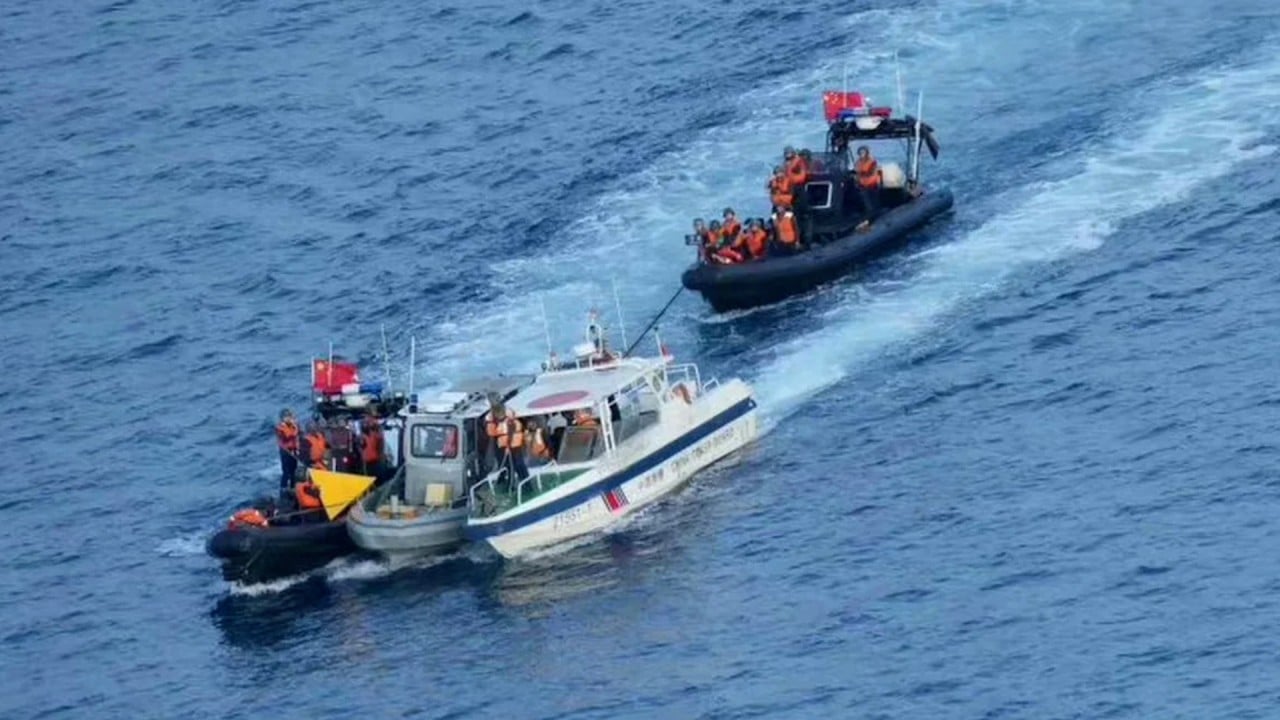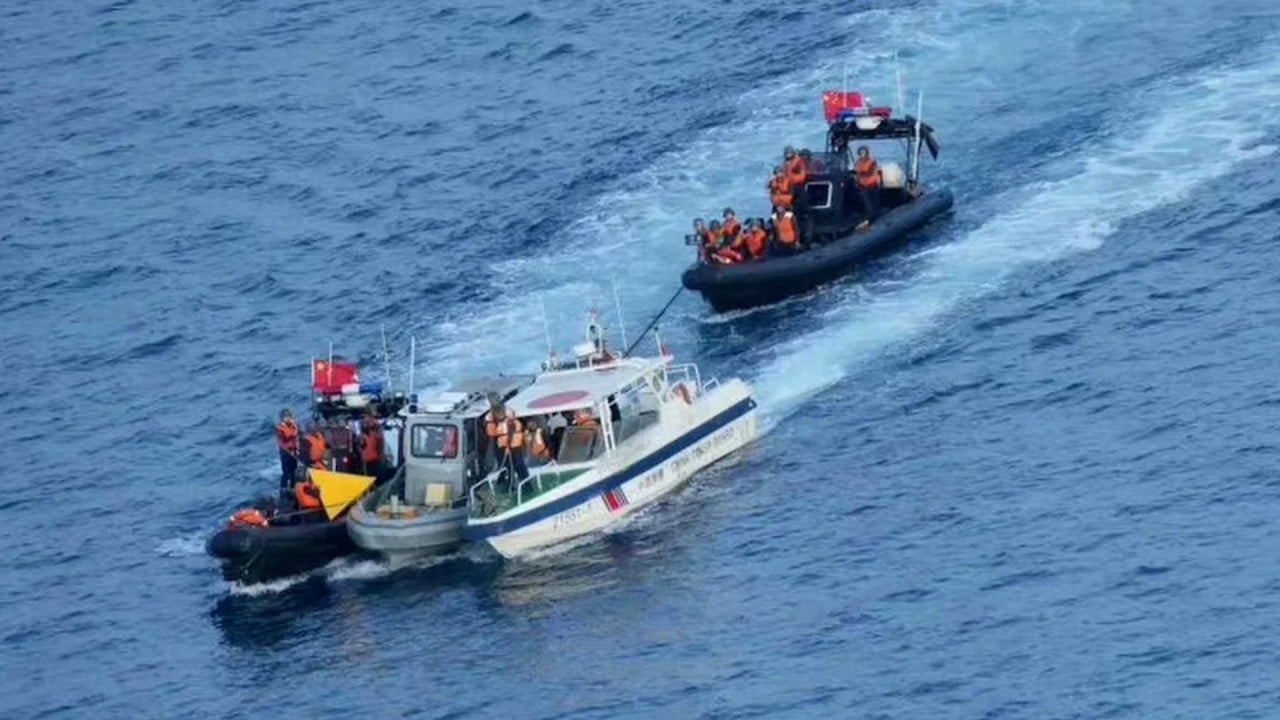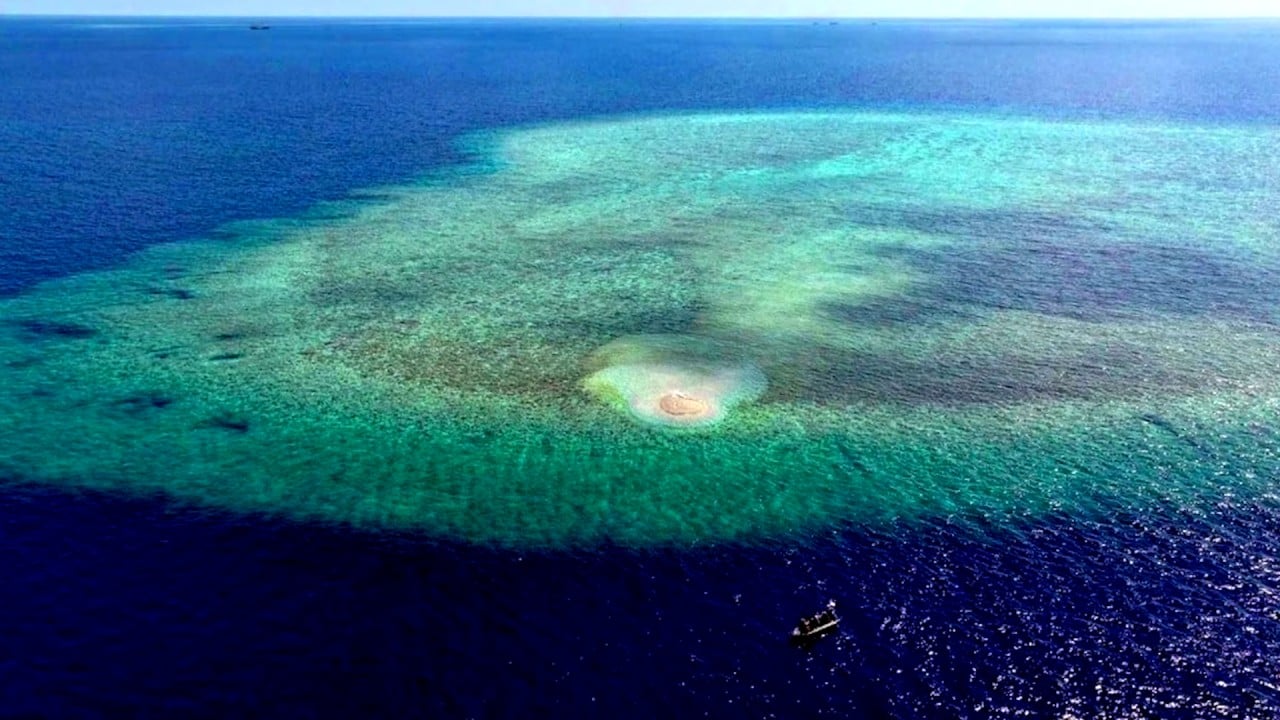Manila’s announcement that a US mid-range missile system will be withdrawn from the Philippines within months is a “gesture” to ease tensions with Beijing in the disputed South China Sea, but the system could still be redeployed to the region, analysts said.
Colonel Louie Dema-ala, a Philippine Army spokesman, said on Tuesday the Typhon weapons system deployed in his country would return to the United States in September “as per plan” once other defence equipment used during joint exercises with the US military had been shipped back.
“The US Army is currently shipping out their equipment that we used during Balikatan and Salaknib [exercises],” Dema-ala said.
However, Dema-ala did not say why Washington was stopping the deployment.
In April, US Army Pacific announced that the service had “successfully” deployed its Mid-Range Capability missile system on the northern Philippine island of Luzon as part of Balikatan and Salaknib annual exercises between the Philippines and the US military.
Philippine troops have reportedly been taught how to use and maintain the Typhon system, but it was not used in live-fire exercises, according to Dema-ala.
It was the first time such a weapon system had been deployed in the Asia-Pacific region since the 1987 US-Soviet Union Intermediate-Range Nuclear Forces (INF) Treaty prohibited the development and possession of land-based missiles with a range of 500km to 5,500km.
Typhon is a land-based, ground-launched system that improves the military’s multi-domain capability. The launcher can fire the Standard Missile 6 (SM-6) and the Tomahawk Land Attack Missile (TLAM), with respective operational ranges of more than 240km (150 miles) and 2,500km (1,550 miles), rendering it capable of covering both the South China Sea and the Taiwan Strait.
The presence of the mid-range missile system on a Philippine island near the disputed waterways angered Beijing.
Chinese Defence Minister Dong Jun expressed strong opposition to the US deployment during his meeting with US Secretary of Defence Lloyd Austin on the sideline of the Shangri-La Dialogue in Singapore in May, saying the system posed “a real threat to regional security”.
The withdrawal of the missile system comes as Beijing and Manila try to reduce South China Sea tension that has escalated to coastguard stand-offs involving water cannons and collisions in waters near the disputed Second Thomas and Scarborough shoals.
During a consultative mechanism meeting in Manila on Tuesday, the two sides exchanged views on the situation surrounding the disputed atolls, and agreed to continue managing differences through negotiation, noting that maintaining peace and stability in the South China Sea was in the “interests of both China and the Philippines”.
On Thursday, Philippine President Ferdinand Marcos Jnr ordered the Philippine military to de-escalate tensions with China in the waters, according to Philippine Army chief of staff General Romeo Brawner Jnr.
Former PLA instructor Song Zhongping said the move was “a gesture” to ease tensions with China following recent bilateral talks.
“It is for easing tensions with China, but whether these weapons will be withdrawn will be up to the US to decide,” he said. “Those missile systems are mobile and can be deployed again whenever needed. Even if they withdraw them now, it shows the US can deploy those in the Philippines when necessary to put pressure on China.”
Senior Colonel Zhou Bo, a retired Chinese officer and senior fellow at Tsinghua University’s Centre for International Security and Strategy, also said the Philippines appeared to be trying to ease tension with China. But he added that it was not clear what role Manila played in the decision.
“It seems like the Philippines is backing down … and want to mitigate the tensions,” he said.
“Manila must have consented to it when the missiles were deployed initially otherwise the US wouldn’t do so, even if just for military training.”
He said the US now had access to nine military bases in the Philippines – something it had long desired as it strengthened its military presence in the area – but that Washington would not seek escalation.
“But did Manila request the removal this time, or something else might play a role? We don’t really know.”
However, Malcolm Davis, a senior analyst at the Australian Strategic Policy Institute, said that while the withdrawal itself was not very significant, the deployment of the mid-range missile system sent a message to Beijing that the US could redeploy such missiles quickly.
“The plan always was to withdraw them at the end of the Balikatan and Salaknib exercises. What is more significant is the deployment of these missiles during the exercise, as sending a message to Beijing,” Davis said.
“The US has demonstrated the ability to deploy such weapons quickly and this will certainly increase the risk and pose dilemmas for Beijing as they contemplate the options vis-à-vis Taiwan, and also as they engage in provocative behaviour against the Philippines, noting the mutual defence treaty between Manila and Washington.”
Colin Koh, a senior fellow at the S. Rajaratnam School of International Studies in Singapore, said he could not foresee the US planning to deploy the system permanently to the Philippines, allowing it only during training exercises.
“We can expect the system to be deployed to the Philippines again for exercises, and Beijing – and even Moscow – will make an issue out of it again,” Koh said.
Stephen Nagy, director of policy research at the Yokosuka Council of Asia-Pacific Studies, said the Philippine archipelago was near Taiwan and would be ideal to position missile systems.
He said removing the missiles might reduce the US’ ability to launch countermeasures against the PLA in the event of an attack and that Beijing perceived Manila as the “soft underbelly” of America’s security structure in the Indo-Pacific.
“This assessment is also ironically shared in Washington by many in the strategic community,” Nagy said.
“Removing mid-range missiles may provide Manila short-term breathing room from Chinese grey-zone operations, but it is not a panacea to make China’s strategic ambitions disappear.”




